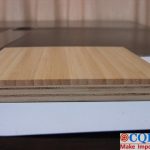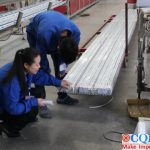Plastic clip quality check,Did you buy the Plastic clip solid?
Clips are small tools that people often use in their daily lives. They are various in shape and types, which are widely used. Most of them are designed with the principle of lever and springs. Today we mainly talk about clothes clips. If they are classified according to materials, there are plastic, bamboo and metal. Their composition is very simple. They are composed of a metal spring and two clips.
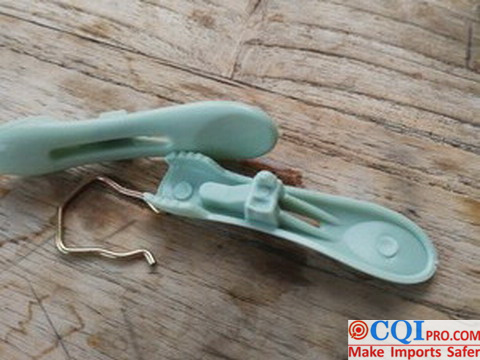
Before Plastic clip quality check ,the Production process
- Injection molding production of clips: according to the requirements of customers, do mold opening and pay attention to the dimensional accuracy of plastic parts. After the mold is ready, the molten raw materials are injected into the mold by pressure,after cooling,the clips can be obtained. Then they are trimmed by hand or machine, such as removing the cloak, picking out bad parts, etc.
- The production of metal springs: the use of fully automated equipment production, early adjustment of the accuracy and surface roughness,which is to determine the number of threads and the degree of density.
- Assembly: The metal spring and the clip are assembled and no misalignment is allowed. Because the clip is easiest to be distorted when using the product, the bite force is insufficient and the function is limited. Fix the clip on a plastic round or other shape without falling and bending.

After simply investigating the market, it was found that most consumers reflected why the plastic clips were deformed after a period of use. When the clothes are taken off, the clip will be torn apart or even broken with a little force, and they could not be assembled and restored. In the plastic clip quality check, it is the key to predicting the problem and solving it in time, but the basic reason is to trace back to the choice of production process and raw materials.
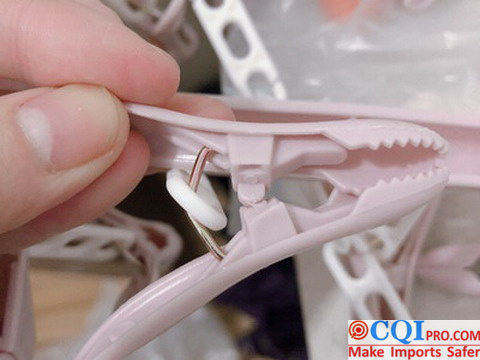
At present, polystyrene is often used on the market,which is a colorless and transparent thermoplastic. The disadvantages of ordinary polystyrene are brittle,low impact strength,easy to stress cracking, poor heat resistance and resistance to boiling water, etc.It can be seen that when selecting raw materials,some basic properties often lead to various defects in the later stages of the product. Through the plastic clip quality check, various defects are at a glance. Some chemical reagents such as anti-aging agents, plasticizers and curing agents can be added during production. A better way is to add other raw materials, such as ABS (a synthetic resin), a reasonable ratio can also better solve the problem of easy deformation and cracking.
Injection molding is the most important part of the process. From the design of plastic parts, the wall thickness is even, rounded,the product can achieve the minimum physical (convenient to repair the mold) and add a mold angle and other details,which can not be missed. Then,on the mold,adjusts the length/diameter of the flow path, adds a gate, increases the size of the sprue or adjusts the position, and adds a cold chute.When injection, parameters such as mold temperature,material temperature adjustment,and pressure retention are adjusted to further prevent deformation and cracking after molding.
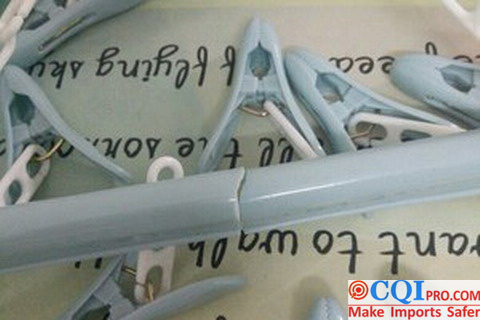
It can be seen that the plastic clip quality check is not an easy task. If you are not careful, you will be deceived by the inspection company. In the article of Avoid Fake Inspection, by introducing how some companies conduct surface inspections to tell the importers to choose the inspection company correctly. After controlling the production process and raw materials, the CLI inspection will perform a plastic clip quality check on the product before shipment.
Plastic clip quality check test
Simulating the common usage scenarios of consumers, the tests are divided into the following three categories:
1. 80% use scenario test:
1) Bite force test: Whether it can properly grip wet clothes, plush toys, food bags, etc.
2) Abuse test: open and close the product for 50 times.
3) Load-bearing test: Load 1kgs of wet clothes for 2hours, then check whether the product is deformed or detached.
4) Bare drop test: From a certain height, free fall, then check if the product is damaged.
2. 19% more demanding use scenario test:
1) For round or rectangular products, place the wet clothes of different weights on the diagonal line for 2-3 hours to check if the product is damaged.
2) If the clothes are gripped, pull off the clothes directly and check if the product is damaged.
3. 1% very demanding use scenario test:
1) For round or rectangular products, on the diagonal,grip the wet clothes of different weights. In this case, directly pull off the clothes and test them three times in succession to check if the product is damaged.
2) For round or rectangular products, twist the product forcefully to check if the product is deformed or broken.
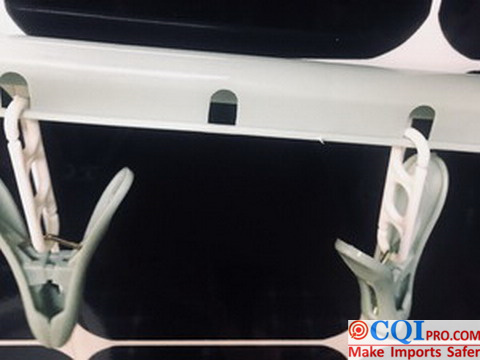
The CQI test will be tested according to the classification of the product. The Testing Scopes article details the product categories and test ranges for CQI inspections and provides one-stop testing and consulting services to importers worldwide.
This test that simulates the consumer’s usage scenarios allows the inspector to carefully perform the plastic clip quality check.Meanwhile, help the merchant to reduce complaints or returns and even help the factory improve the design and use of the product. For the testing of plastic clothespins,here only mention a part of it.It can also be used in other products.After reading above information,everyone should be able to solve the doubts about the problem of why the clips are cracked.
CQI5 is committed to providing importers worldwide with product quality inspection services that far exceed those of our peers. If you are planning to import or have imported from China or Southeast Asian countries, please contact us cs’@’cqipro.com to learn more about how we can make your imports safer.
This article is an original article for CQI Inspection, who is committed to providing high-quality product inspection technology and know-how sharing for global importers and retailers to make imports safer.
All rights reserved. The contents of this website provided by CQI Inspection may not be reproduced or used without express permission.
For reprint, please contact with CQI Inspection, thank you.
